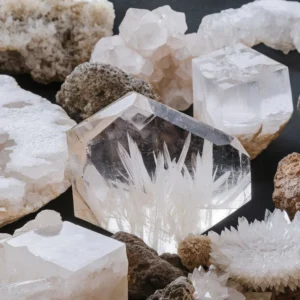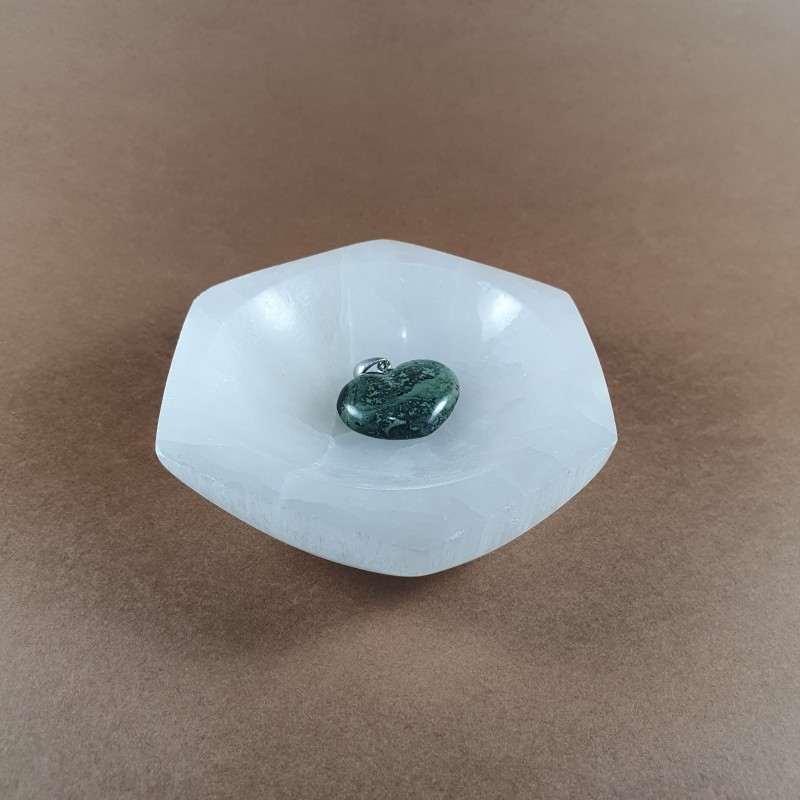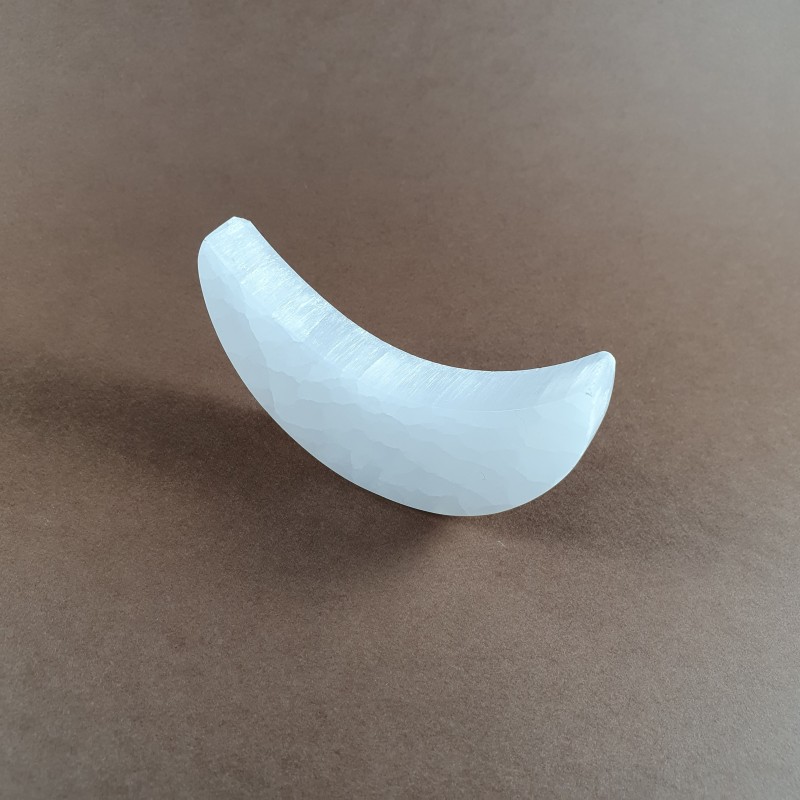Gypsum, a widely used and naturally occurring mineral, plays an essential role in many industries and applications. Known chemically as calcium sulfate dihydrate, gypsum has a unique composition and structure that make it a valuable resource. Found in abundance across the globe, this mineral is celebrated for its versatility, ecological importance, and historical significance.
Table of contents / Jump to
What is Gypsum?
The History of Gypsum
Formation of Gypsum
Physical and Chemical Properties
Uses of Gypsum Across Industries
The Ecological Importance of Gypsum
How to Identify Quality Gypsum
Future Trends in Gypsum Use
Conclusion
What is Gypsum?
Gypsum is a soft sulfate mineral with the chemical formula CaSO4·2H2O. Classified as a sulfate mineral, gypsum is easily identifiable by its pearly luster and ability to form large, transparent crystals. This mineral is most commonly associated with sedimentary rock formations, often occurring in thick beds alongside other evaporite minerals like halite and anhydrite.
The monoclinic crystal system of gypsum further distinguishes it from other minerals. Its structure comprises layers of calcium and sulfate ions, separated by water molecules, which contribute to its characteristic softness and flexibility. On the Mohs scale of hardness, gypsum ranks between 1.5 and 2, making it ideal for applications requiring a soft, workable material. This property also makes it easy to carve, a feature exploited by artisans for centuries.
The History of Gypsum
Gypsum has been used by humans for thousands of years. Archaeological evidence shows that ancient Egyptians used gypsum plaster in the construction of the Pyramids. The mineral’s role in history extends to ancient Rome, where it was used for frescoes and decorative elements. Today, gypsum continues to be a vital material in both traditional and modern construction techniques.
Formation of Gypsum
Gypsum is primarily formed through the evaporation of saline water in shallow marine basins. As water bodies evaporate over time, they leave behind concentrated deposits of minerals. This process gives gypsum its classification as an evaporite mineral. Gypsum deposits are often found in arid regions, where conditions for evaporation are optimal. These deposits can vary in size from small pockets to extensive layers that span hundreds of miles.
Additionally, gypsum can form as a byproduct of chemical reactions in industrial processes, such as flue-gas desulfurization (FGD) in power plants. This synthetic gypsum has properties similar to natural gypsum and is widely used in industrial applications.
Physical and Chemical Properties
Gypsum’s physical and chemical properties make it an exceptional mineral for various applications:
- Softness: Its low hardness makes it easy to shape and use in construction.
- Water Content: The presence of water molecules in its structure gives gypsum its unique ability to rehydrate and set when mixed with water.
- Transparency and Luster: High-quality gypsum crystals, such as selenite, are transparent and exhibit a pearly luster, making them highly desirable for collectors.
Uses of Gypsum Across Industries
Gypsum’s unique properties have led to its adoption in various industries, making it a cornerstone material for numerous applications. Let’s explore some of its most common uses:
1. Construction and Building Materials
Gypsum is a vital ingredient in the construction industry. It is the primary component in wallboard, also known as drywall or plasterboard. Wallboard is used extensively for interior walls and ceilings due to its fire-resistant and soundproofing properties. Gypsum-based drywall provides a smooth surface that can be painted or finished to enhance the aesthetics of a space.
Another critical application in construction is the production of plaster, which has been used since ancient times for coatings and decorative elements. Gypsum plaster offers excellent adhesion, durability, and a smooth finish, making it a preferred choice for modern construction projects. Additionally, gypsum-based plasters are used for casting architectural elements such as cornices and moldings.
2. Cement Manufacture
In the production of cement, gypsum acts as a crucial additive. It regulates the setting time of cement, preventing it from hardening too quickly. This allows builders the necessary time to work with the material effectively. Without gypsum, modern construction techniques would face significant challenges, as cement’s usability would be drastically reduced.
3. Agricultural Applications
Gypsum’s ability to improve soil quality has made it a popular choice in agriculture. Its application helps loosen compacted soils, improve water infiltration, and provide essential nutrients like calcium and sulfur. These benefits make gypsum a valuable tool for enhancing crop yields and promoting sustainable farming practices. Additionally, gypsum can mitigate soil salinity, making it an effective soil conditioner in arid and semi-arid regions.
4. Industrial and Specialty Uses
Beyond construction and agriculture, gypsum finds use in various industrial processes. For example, it is used in the production of ceramics, as a filler in paper and paint, and even as a dietary supplement for livestock. Gypsum is also used to manufacture molds for casting metals, rubber, and plastics due to its low shrinkage and dimensional stability.
5. Artistic and Decorative Uses
Gypsum’s softness and ease of carving have made it a favorite medium for artists and sculptors. From ancient statues to intricate modern designs, gypsum-based materials continue to inspire creativity. High-quality gypsum crystals, such as selenite and satin spar, are also highly prized by collectors and are often used in jewelry and home décor.

The Ecological Importance of Gypsum
Gypsum deposits play a critical role in the natural environment. Acting as a natural buffer, these deposits help regulate pH levels in soils and water bodies. Additionally, gypsum mining has a relatively low environmental impact when managed responsibly, making it a sustainable choice for industrial use. The recycling of gypsum products, such as drywall, further enhances its eco-friendly profile.
How to Identify Quality Gypsum
When purchasing gypsum for industrial or personal use, quality is paramount. High-grade gypsum should have a uniform composition and minimal impurities. Factors such as color, transparency, and crystal structure can also indicate the quality of gypsum. For collectors, specimens with well-formed crystals and unique features are particularly desirable.
Future Trends in Gypsum Use
As industries continue to evolve, the demand for gypsum is expected to grow. Innovations in construction, agriculture, and industrial applications are driving the development of new gypsum-based products. Additionally, the shift toward sustainable practices is encouraging the use of recycled and synthetic gypsum, reducing the reliance on natural deposits.
Conclusion
Gypsum, with its chemical identity as calcium sulfate dihydrate, is far more than just a common mineral. As a sulfate mineral found in sedimentary rock formations, it embodies versatility and utility. Whether it’s enhancing crop yields through agricultural applications, forming the backbone of wallboard and plaster, or supporting cement manufacture, gypsum proves indispensable in modern society.
For those in the fossil and mineral trade, offering high-quality gypsum can cater to both industrial clients and collectors fascinated by its unique properties. With its wide range of applications and ecological benefits, gypsum remains a cornerstone mineral that continues to shape the world around us. Explore the world of gypsum and unlock its potential in your projects today!






